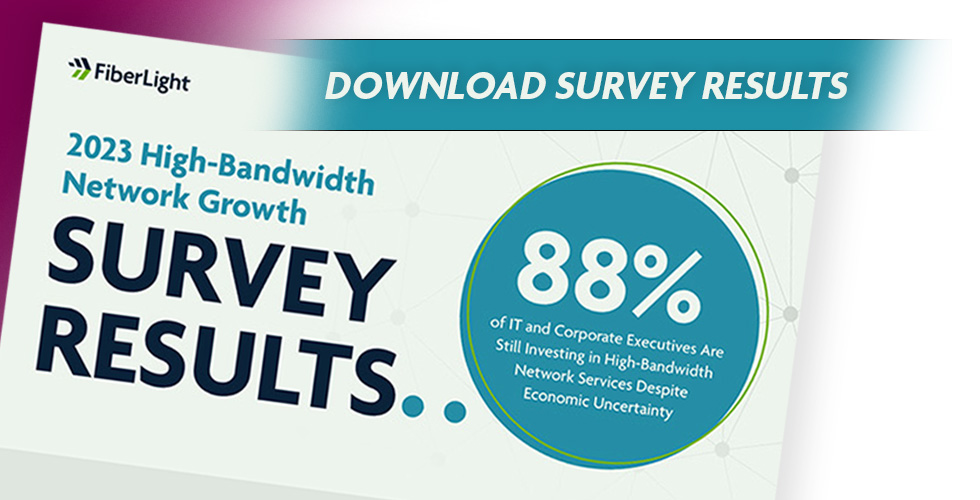The current economic climate might be uncertain, but one thing is not: companies are still heavily investing in high-bandwidth network services.
FiberLight recently surveyed 1,750 corporate and IT executives, and a resounding 88% said that they are still very much investing in high-bandwidth network services despite the economy. Their investments are largely driven by three key factors: emerging technologies, new remote and hybrid work models, and the surge in cloud computing needs where enterprises are migrating all or a portion of their applications to the Cloud.

Many organizations today are moving toward running their business from the Cloud because of the flexibility and resiliency it offers. In our survey, executives reported hosting Unified Communications and Collaboration and their SaaS applications in the Cloud.
This supports another trend: the growth of remote and hybrid work models. The number of people working remotely has increased exponentially, and it is here to stay. Connectivity needs will continue to grow.
But what is really noteworthy is the growth of emerging tech applications as a key driver of high-bandwidth network investment. McKinsey estimates that by 2025, 50 billion devices will be connected to the Industrial Internet of Things (IIoT). The Insurance Institute for Highway Safety expects there to be 3.5 million self-driving vehicles on U.S. roads by 2025, and 4.5 million by 2030. The Institute of Electrical and Electronics Engineers predicts that 75% of cars on the roads in the world will be autonomous by 2040.
Our industry must pay close attention to emerging technologies like autonomous vehicles, IoT, virtual reality, augmented reality, and more–perhaps even more than cloud computing or remote and hybrid work models. Emerging technologies will demand more and more in terms of connectivity, and there is a lot at stake. Can you imagine losing data or connectivity while riding in an autonomous vehicle?
These last-mile requirements drive middle-mile innovation. Today, companies are prioritizing Data Centers, Cloud, and Dedicated Internet Access (DIA). Tomorrow, it may all change as new technologies become available.
Innovation must involve more than just connecting the customer or offering a lower price. Instead, true innovation will continually focus on improving network capacity, security, latency, reliability, and accessibility in both major metro and underserved rural areas to meet the growing demands of consumers and businesses.
True innovation that goes beyond bandwidth, a watchful eye on emerging tech, and a focus on future connectivity needs, is what providers should be building their businesses on. The companies that understand what is coming are those who will be successful in the future.
You can check out the results of our survey at fiberlight.com.
–


